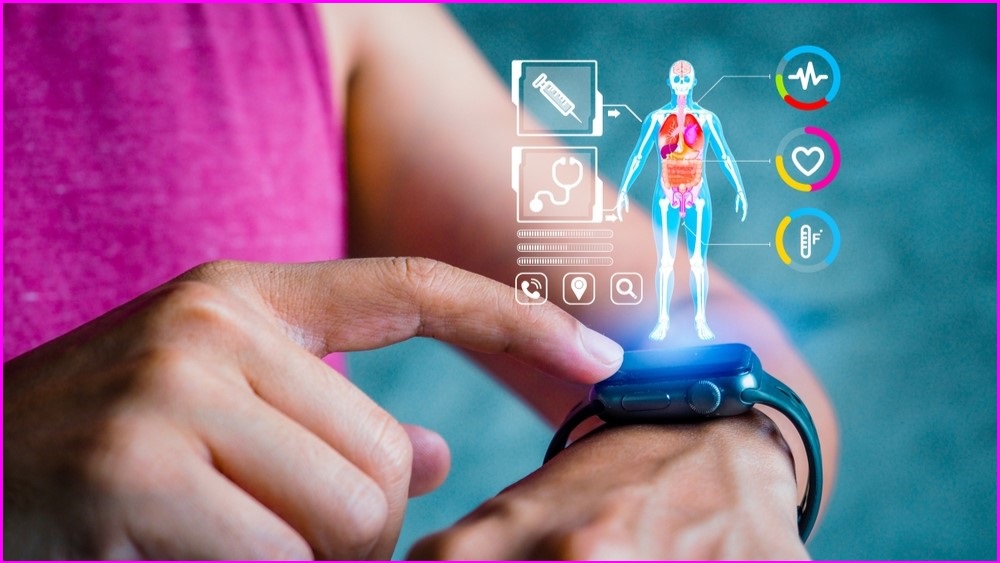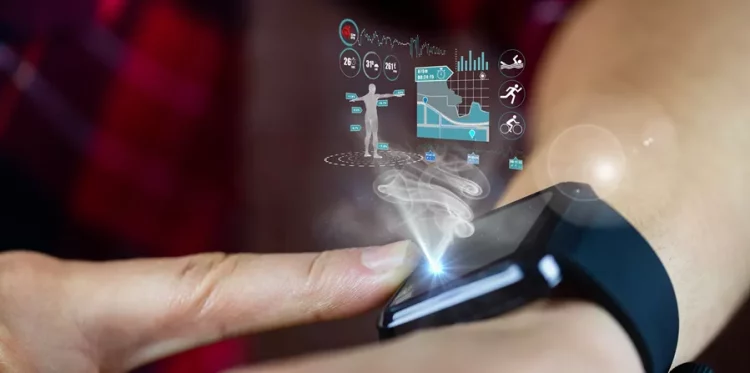Introduction
In recent years, the rapid development of smart wearable technology has revolutionized the way individuals manage their health and wellness. These devices, ranging from fitness trackers and smartwatches to health-monitoring gadgets like heart rate sensors and sleep trackers, are now commonplace in daily life. The rise of these gadgets is not just a trend, but a transformative shift in how we approach personal health management.
The integration of advanced sensors, machine learning, and cloud computing in smart wearables allows users to track, monitor, and analyze their health metrics in real-time. This level of accessibility to personal health data is empowering individuals to take a proactive approach to their well-being, making it easier to monitor chronic conditions, manage fitness goals, and even detect early signs of health issues.
This article explores how smart wearables are helping users better manage their health, the types of devices available, and the impact these technologies have on healthcare, fitness, and wellness.
The Rise of Smart Wearables in Health Management
The concept of wearable devices for health and fitness isn’t entirely new. Early models such as pedometers date back decades, while heart rate monitors and sports watches have been available for quite some time. However, the recent explosion in popularity of smart wearables can be attributed to advancements in technology, particularly in the fields of sensors, data analytics, and wireless connectivity.
Modern smart wearables go beyond simple fitness tracking. They are now capable of continuously monitoring a wide range of health parameters, including heart rate, blood oxygen levels, sleep patterns, stress levels, and even blood pressure. These devices are increasingly being used to gather data that can help individuals make informed decisions about their health and wellness.
The Technology Behind Smart Wearables
At the heart of most smart wearables are advanced sensors that can detect physiological data and translate it into meaningful information. Key technologies include:
- Heart Rate Monitors: These sensors track changes in heart rate, offering insights into cardiovascular health and fitness levels. They help users stay within optimal heart rate zones for exercise and recovery.
- Accelerometers and Gyroscopes: Used for tracking physical activity, these sensors measure movement patterns, including steps taken, distance traveled, and the intensity of various physical activities. They also help track posture and detect falls in some devices.
- Electrodermal Activity (EDA) Sensors: These sensors measure the conductivity of the skin to gauge stress levels and emotional responses. They can provide insights into mental health and stress management.
- Sleep Monitoring Sensors: Embedded in most smartwatches and fitness trackers, these sensors track sleep cycles, including deep sleep, light sleep, and REM stages. Sleep tracking helps users improve their sleep hygiene and understand how various factors affect sleep quality.
- Blood Oxygen Sensors (SpO2): More advanced wearables now feature sensors capable of measuring blood oxygen saturation, an important indicator of lung and cardiovascular health.
- ECG and Blood Pressure Monitoring: Some wearables, like the Apple Watch and specialized health bands, are capable of taking electrocardiogram (ECG) readings to monitor heart health. Blood pressure monitoring is also becoming a feature in certain devices.
These sensors, combined with the power of artificial intelligence (AI) and machine learning algorithms, allow wearables to continuously collect and analyze vast amounts of data, providing actionable insights to users in real-time.
How Smart Wearables Improve Health and Wellness Management
The key benefit of smart wearables lies in their ability to provide real-time health data that empowers users to make informed decisions about their wellness. Here are some of the primary ways these devices are enhancing health management:
1. Chronic Disease Management
For individuals living with chronic conditions such as diabetes, heart disease, or hypertension, smart wearables offer an effective way to continuously monitor critical health metrics. These devices can track vital signs like blood sugar levels, blood pressure, and heart rate, sending real-time data to the user or their healthcare provider.
For instance, diabetic patients can use continuous glucose monitors (CGMs) to keep track of their blood glucose levels throughout the day, while heart disease patients can monitor their ECG and heart rate regularly. This data can help users adjust their medications or lifestyle in real-time, reducing the risk of complications and hospital visits.
2. Fitness and Activity Tracking
Fitness tracking is one of the most popular uses for smart wearables. Devices like the Fitbit, Garmin, and Apple Watch provide users with the ability to track steps, calories burned, workout intensity, and overall activity levels. These wearables provide motivation and accountability, helping users stay on top of their fitness goals.
In addition to tracking basic physical activity, advanced wearables offer metrics that can improve the effectiveness of training programs, such as heart rate zones, recovery times, and VO2 max measurements. Athletes can use this data to optimize their performance, prevent overtraining, and improve their physical health.

3. Mental Health Monitoring
Smart wearables are also proving valuable tools in mental health management. Devices with EDA sensors, such as the Fitbit Sense, monitor stress levels by detecting changes in skin conductance. These devices can alert users when their stress levels are elevated and offer guided breathing exercises to help calm down.
In addition to stress tracking, some wearables also offer mindfulness features, such as meditation prompts or sleep improvement techniques, helping users improve their emotional well-being. Monitoring mental health is critical in preventing burnout, anxiety, and depression.
4. Sleep Quality Monitoring
Good sleep is foundational to good health, but many people struggle with sleep disorders like insomnia or poor sleep quality. Wearable devices have become a powerful tool for improving sleep health by tracking sleep cycles and providing insights into factors that affect sleep quality, such as room temperature, activity levels before bed, and stress levels.
For example, the Oura Ring, an advanced sleep and activity tracker, provides users with a comprehensive “sleep score” that rates the quality of their sleep based on duration, stages, and consistency. With this information, users can make adjustments to improve their sleep hygiene, such as altering their bedtime routine or adjusting environmental factors.
5. Emergency Alerts and Fall Detection
For elderly users or those at risk of falls, many smart wearables now offer fall detection and emergency alert features. Devices like the Apple Watch Series 7 have integrated sensors capable of detecting sudden movements, such as falls, and automatically alert emergency contacts if the user is unresponsive.
This feature is particularly valuable for seniors living alone or individuals with conditions that increase the risk of falls, such as osteoporosis or Parkinson’s disease. It ensures that help can be summoned quickly, reducing the time spent in potentially life-threatening situations.
Data Integration and Health Ecosystem
One of the most powerful aspects of smart wearables is their ability to integrate data with broader health management ecosystems. Many wearables connect seamlessly with other devices, applications, and healthcare platforms, creating a comprehensive health management system.
For example, data from wearables can be synced with health apps, enabling users to track a wide range of metrics in one central place. More importantly, this data can be shared with healthcare providers, giving them real-time access to critical health information, which can be used for remote monitoring, diagnostics, and personalized treatment plans.
Telemedicine platforms, in particular, can benefit from this integration. Wearables that monitor heart rate, blood pressure, and glucose levels allow for remote consultations, reducing the need for in-person visits and improving access to healthcare for patients in remote areas.
Privacy and Security Concerns
As with any health-related data, privacy and security are major concerns with smart wearables. These devices track sensitive health information, which, if exposed, could lead to identity theft, discrimination, or other harmful consequences.
Wearable manufacturers must implement strong encryption and data protection protocols to safeguard user data. Additionally, users must be aware of the privacy policies of the platforms they’re using and ensure that they’re only sharing their data with trusted entities.
One promising development is the increasing use of decentralized data storage solutions and blockchain technology to ensure that personal health data remains under the user’s control. With these advancements, it may become easier to safeguard health data and ensure it is only accessed by authorized parties.
The Future of Smart Wearables in Healthcare
The future of smart wearables holds immense potential for advancing personal health management. As technology continues to evolve, we can expect wearables to become even more sophisticated, with improvements in sensor accuracy, data analysis, and integration with emerging health technologies like AI-driven diagnostics.
Key areas for growth include:
- Predictive Health Monitoring: Using machine learning algorithms, wearables may be able to predict health issues before they occur, such as detecting early signs of heart disease, diabetes, or other conditions.
- Personalized Health Plans: With the integration of AI, wearables could offer personalized health recommendations based on real-time data, including nutrition advice, exercise plans, and mental health strategies.
- Greater Medical Integration: As wearables become more accepted in healthcare, they could be used to monitor more complex health conditions, such as epilepsy or chronic pain, and be integrated into more formal medical treatments and research.
Conclusion
Smart wearables are redefining how individuals manage their health and wellness. From fitness tracking and sleep monitoring to chronic disease management and mental health support, these devices provide users with a level of access and control over their health that was previously unattainable. As wearable technology advances, it will continue to empower individuals to take charge of their health, improve quality of life, and potentially reduce healthcare costs by preventing serious health issues before they arise.
However, the successful integration of these devices into everyday health management relies not only on technology but also on considerations of privacy, security, and user education. As we move toward a more connected and health-conscious society, smart wearables will undoubtedly play an increasingly important role in the management of personal health.











































